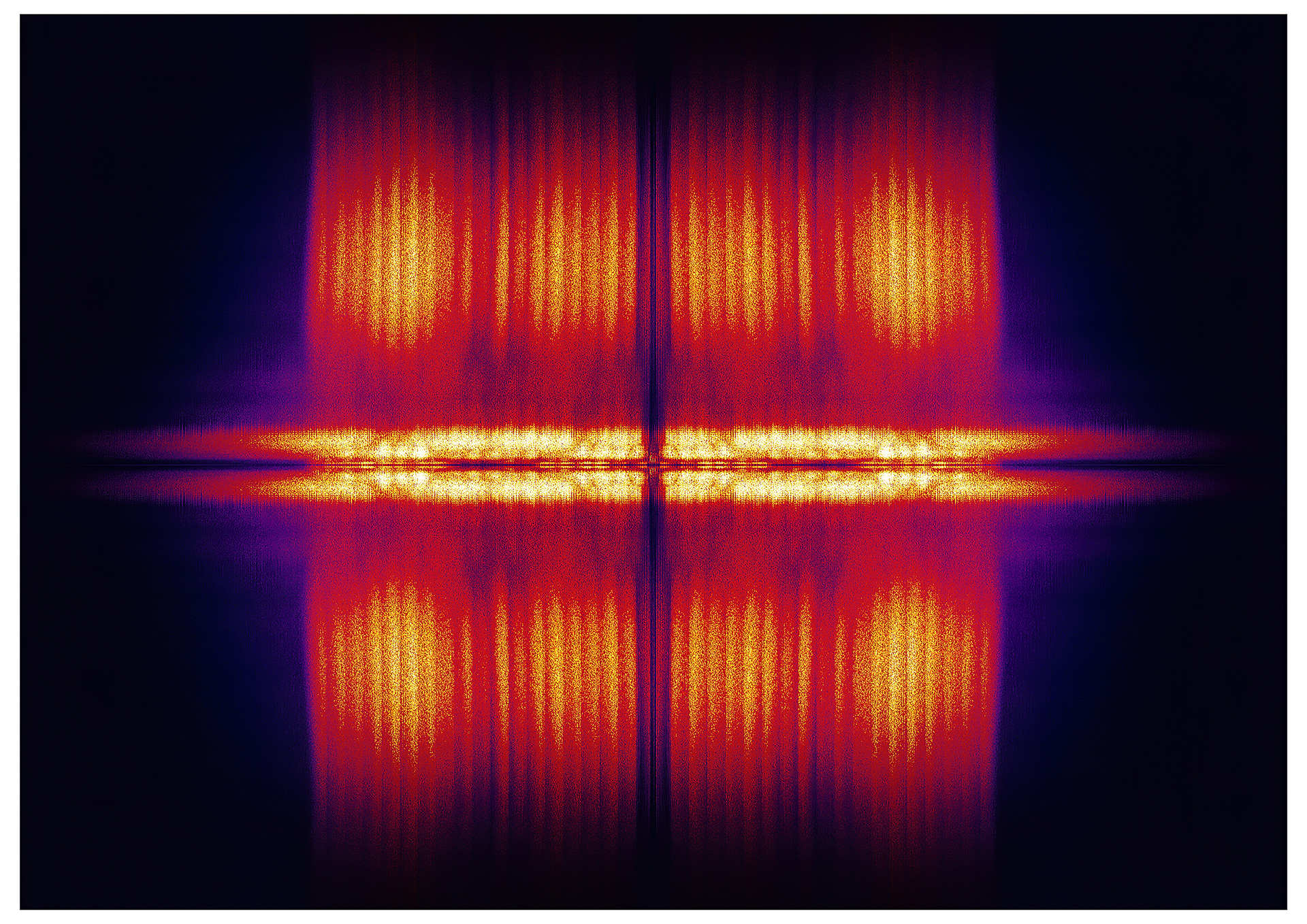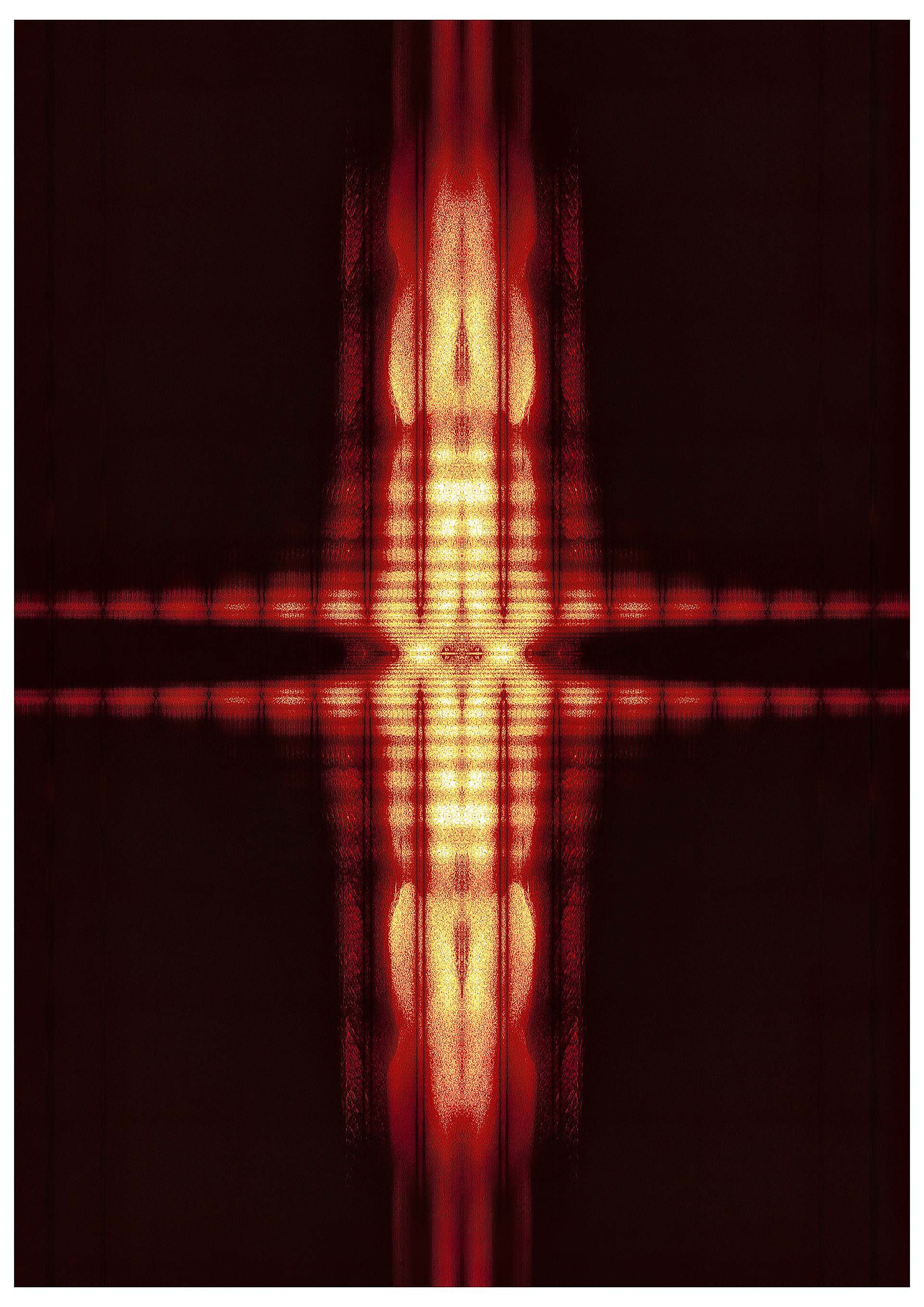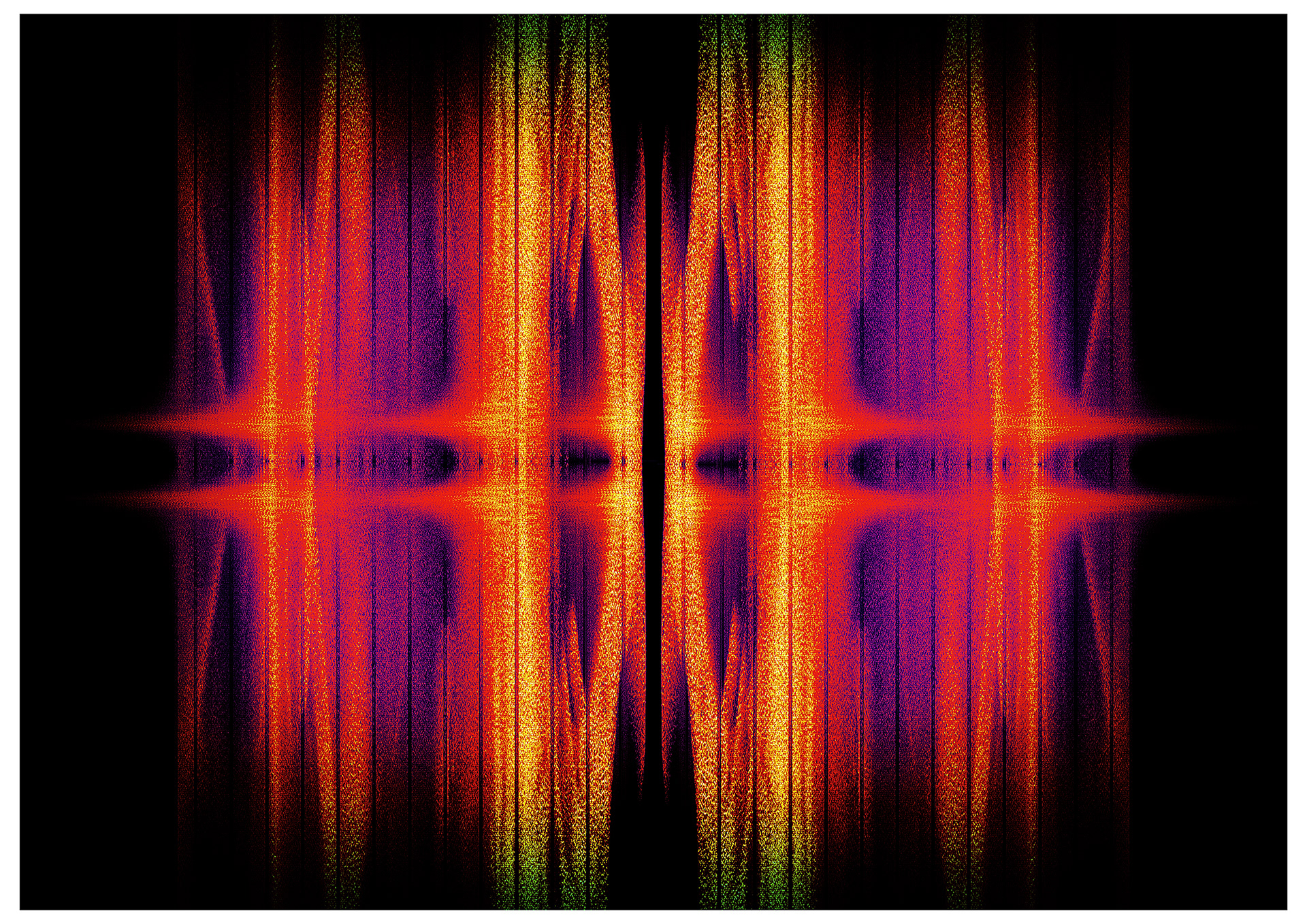


Interfearence interrogates the conditions of portraiture through processes of translation, distortion, and systemic failure. Photographic portraits are extracted from their traditional function as mimetic records and reconfigured as raw data. This data is imported into a digital audio environment, where it is subjected to operations of modulation, compression, reverberation, and distortion. The image is treated as signal, its visual information recast as sound, its surface reconstituted as a field of frequencies and temporal events. The resulting audio is then visualised as spectrograms, returning to the register of the image, but only through the residue of its own transformation.
This recursive process undermines the stabilising promise of portraiture. Likeness dissolves into spectral patterns, resemblance becomes interference, and identity appears only as a trace refracted through systems of mediation. The work foregrounds the instability of representation in the digital condition, where images are never fixed but perpetually translated across platforms and corrupted in their passage.
Interfearence insists on the productive role of noise and failure. The portrait is no longer an index of presence but a transmission whose clarity is compromised at every stage. What remains is not recognition but residue: a diagram of identity as interference, a reminder that representation is inseparable from distortion, and that the self, when rendered as data, persists only as signal refracted through noise.